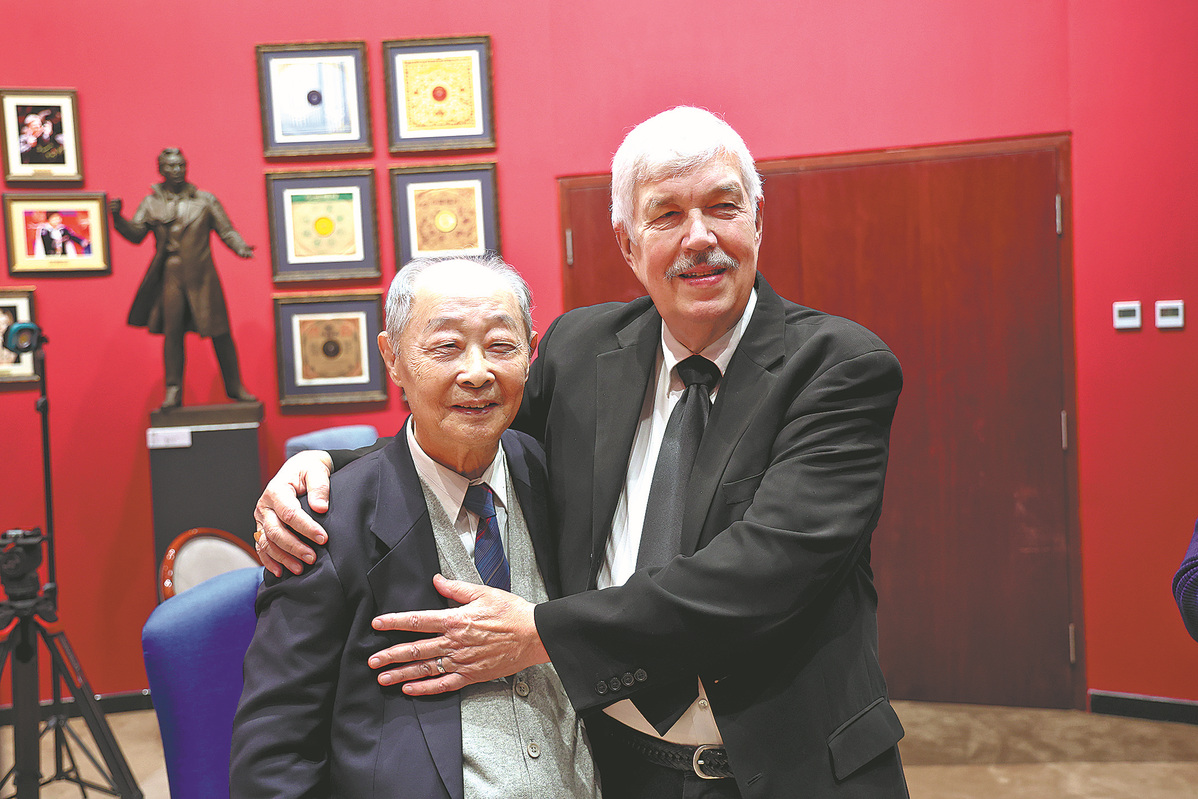Musical reunion spreads notes of harmony


Tour schedule
During the ongoing China tour, which started on Thursday and is due to end on Saturday, the Philadelphia Orchestra will visit Tianjin, Shanghai and Suzhou, Jiangsu province.
Last Saturday, the orchestra gave a performance at the Tianjin Juilliard School, which featured musicians from that school, the Tianjin Symphony Orchestra and Tianjin Conservatory of Music. On Friday, the orchestra is due to give master classes, panel discussions and a chamber performance at ShanghaiTech University.
Early this year, the Philadelphia Orchestra partnered with the iSING! Suzhou International Young Artists Festival to present ancient Tang Dynasty (618-907) poems set to new works by young composers from around the world.
During the concert on Friday, the orchestra also performed selections from those works related to Tang Dynasty poems, such as Drink to Me by Li Bai and Upon the Crane Tower by Wang Zhihuan.
Rais-Sherman said: "This is my first visit to China. I am getting to know about this country, especially when I prepare and perform works of music based on Tang Dynasty poems."
The US orchestra's landmark tour of China in 1973 came a year after then-US president Richard Nixon visited the country.
The Philadelphia Orchestra was considered a natural choice for Nixon, who had been honored at its anniversary concert the previous year.
Ormandy was also considered suitable, as he had conducted a China Relief concert in Australia 30 years before, and took part in charity concerts to raise money for Chinese health workers in 1940 during the War of Resistance Against Japanese Aggression (1931-45).
On Oct 30, the China National Symphony Orchestra launched a salon in Beijing, featuring Zhu and its former violinist, 88-year-old Yang Shi, who played in 1973 with the Philadelphia Orchestra.
At that time, there were no direct flights between the US and China. The orchestra spent a night in Honolulu, then flew to Tokyo, before finally arriving in Beijing. It played four concerts at the Cultural Palace of Nationalities in the Chinese capital, and the musicians visited scenic spots, including the Great Wall, the Summer Palace and the Forbidden City. They also watched the ballet The White Haired Girl.
"This had never happened before, so we were all very excited after hearing the news that the orchestra was coming to China," Zhu said. "We were the first group of musicians with the orchestra, but our skills were not so good as those of young musicians today. However, we all prepared fully in the hope of performing to our best.
"During one rehearsal with conductor Li Delun, we played the first movement of Beethoven's Fifth Symphony for the American visitors. Li then asked Ormandy to conduct, and after a few bars, we played very well together."
Ormandy later asked the Central Philharmonic Society to play a Chinese work, and Li conducted The Moon Reflected on the Second Spring. Ormandy was so impressed by the music that he asked for a score of it.
A photograph of the Philadelphia Orchestra's visit to China in 1973 captures its musicians showing crowds in the capital how to play Frisbee.
"The orchestra's visit made headlines. It was not only a musical exchange, but also communication between the American musicians and the Chinese people," Zhu said.


















